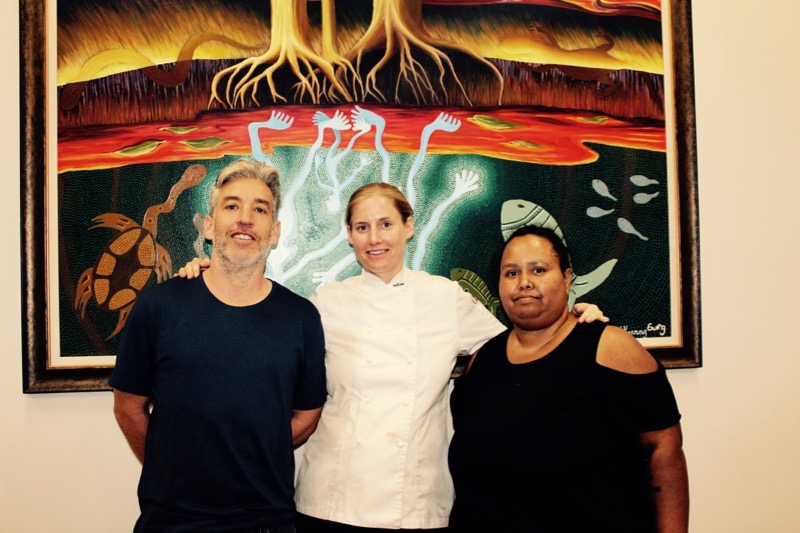Here’s wishing everyone a fabulous 2019! No doubt you are still recovering from the madness of Christmas and New Year’s celebrations. In Singapore, an even bigger celebration is about to take place - Chinese New Year!
All around Singapore hang red lanterns, stalls selling tiny red envelopes and paper offerings and retailers with food hampers containing fresh fruit, mandarins and dried mushrooms. It is a time for feasting and family, with the New Year’s feast menu featuring bottomless servings of Chinese herbal soups and bakkwa as well as Chinese desserts like steamed rice glutinous rice cake called Nian Gao and pineapple tarts. All to usher in a new year of prosperity and wellness.
Interestingly, in Traditional Chinese medicine there is an age old belief that the body has an internal temperature or energy known as Qi. The Chinese believe that finding a way to balance the Yin (Cold) and Yang (Hot) energies within our bodies can cure chronic ailments and sickness. So, by looking at the nutritional properties of certain foods, the Chinese have categorised each food into Warm, Cold and Neutral foods. With an understanding of our bodies and symptoms, food is then used to cure any imbalances.
The worldwide recognition and acceptance of Chinese medicine and its properties led us to consider and reflect upon the importance of traditional Aboriginal Australian medicines and herbs. Notably, to think about the spiritual healers within our Aboriginal and Torres Strait Islander communities. The Ngangkari healers of the APY lands in South Australia, for example, are healers through family descent who pass on their knowledge from generation to generation.* Similar to Chinese medicine, the focus is on treating the spirit balance within the body. Unfortunately, Australia does not officially recognise the importance of Aboriginal traditional medicine and, in fact, South Australia is the only state where the Ngangkari healers work in collaboration with the mainstream health system.
As our time in Singapore draws to a close, we thought it fitting to experiment with a well-known Chinese dessert but with our own RiverMint twist, to pay our respects to the medicinal qualities inherent in native Australian herbs. And what is more refreshing and cooling during a hot Australian summer’s day than Iced Chin Chow tea?!
In Singapore, you can find grass jelly or Chin Chow in every supermarket in the fridge section ready to eat in packet or can form. Chin Chow is a jelly made with the leaves of the Mesona Chinensis plant, a member of the mint family. Often served with honey, soy milk or a sugar syrup, it is eaten after a meal to aid with digestion and heartburn. The jelly is also used in traditional milk teas or ‘bubble tea’.
Using native lemongrass, rivermint and eucalyptus to infuse our jelly, here is our unique RiverMint Chin Chow Iced tea recipe. We hope you enjoy making it and sipping on it over the hot months ahead.
Happy Chinese New Year and Chin Chin…….. or should we say ‘Chin Chow!’
* NOTE: To learn more about the place of Aboriginal traditional medicine in Australia visit the Creative Spirits website.
RiverMint Chin Chow Iced Tea (Serves 4)
For the tea
20g native rivermint sprigs
2 x green tea bags
4 cups boing water
100ml almond or macadamia milk, heated but not boiled
Raw sugar
For the jelly
20 native lemongrass strands
3 sprigs native rivermint, leaves picked
1 drop Essentially Australia Eucalyptus Blue Gum essential oil
2 litres water
8 tbsp tapioca flour
1 tsp agar agar powder + 4 tbsp water
Steep green tea bags and native river mint sprigs in boiling water. Check for taste until desired strength is met. You may need to remove the green tea bags before the mint sprigs to get a nice balance. Add milk and sugar to desired sweetness until fully dissolved. Refrigerate until chilled.
Place lemongrass and river mint strands and leaves in the water and bring to boil. Lower heat and allow to simmer with lid on for 45 mins until it is very fragrant. Turn off heat, add eucalyptus oil and allow to infuse for up to 3 hrs until the water is cool. Strain liquid. (There should be about 500ml liquid remaining after this process).
Reserve half of the liquid and mix this gradually with the tapioca starch until it is paste like, strain through a wire strainer.
Mix agar agar powder with 4 tbsp boiling water and boil whisking until it dissolves completely and turns into a paste.
Bring the remaining reserved liquid back up to the boil and gradually add the agar paste and then add the tapioca flour paste into the liquid. Strain again, skim the top and pour into a small square tin lined with cling film. Allow to set at room temperature then transfer to fridge. Cut into squares.
Take serving glasses and fill quarter full with ice, add two chin chow squares and top up with the milk tea. Serve with a long spoon, a straw and a mint sprig.








